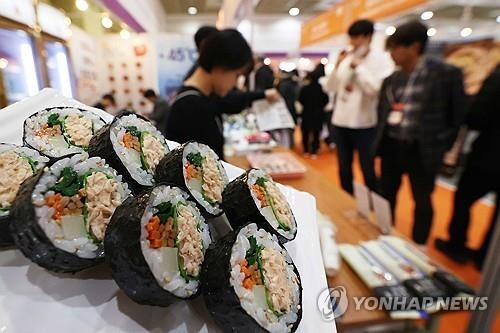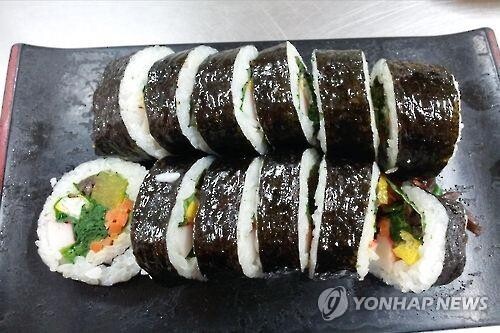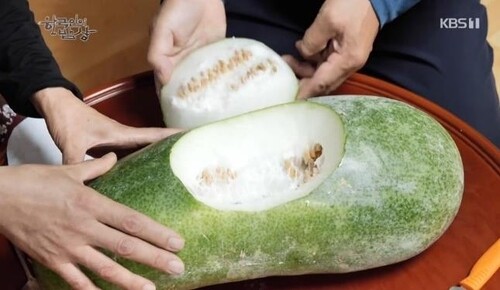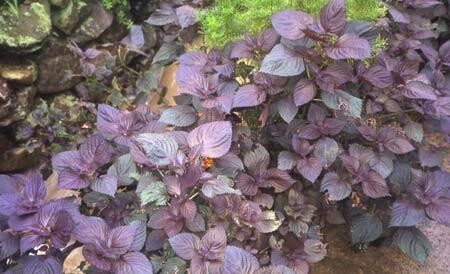*Editor’s note: K-VIBE invites experts from various K-culture sectors to share their extraordinary discovery about the Korean culture.
Choi Man-soon's Medicinal K-Food: Memories of Gimbap and Medicinal Food
By Choi Man-soon, Food Columnist and Director of the Korea Traditional Medicine Food Research Institute

SEOUL, Sept. 19 (Yonhap) -- Recently, Korean gimbap has been gaining popularity worldwide.
For many Koreans, gimbap brings back fond memories, and the author also recalls a childhood memory related to gimbap during an autumn school picnic.
The gimbap packed by the author’s mother in the morning was simple: seaweed (gim) wrapped around rice seasoned with sesame salt and sesame oil, with stir-fried anchovies, kimchi, and pickled radish inside. At the time, packaging materials were scarce, so the whole gimbap would be wrapped in hanji (traditional Korean paper) and then wrapped again in newspaper, placed in a cloth bundle, and neatly tied up for the picnic.
This simple gimbap remains one of the most unforgettable and delicious meals.
 |
| ▲ Visitors taste gimbap at a food expo in Seoul on Nov. 22, 2023. (Yonhap) |
◇ Understanding 'Cheon' as the Foundation of Food
In The Art of War by Sun Tzu, "Cheon," or "heaven," is the second of the five key elements for evaluating power. What does "Cheon" mean in the context of food?
It means understanding the seasonality and balance of ingredients before cooking. The weather, seasonal ingredients, and conditions such as temperature and humidity should be considered when preparing food.
These days, people who specialize in coffee brewing or baking are admired for their ability to apply these principles, but in the past, mothers in Korea would prepare every meal this way.
Yi Yin, a famous chef and prime minister during ancient China’s Xia and early Shang dynasties, proposed the "Five Flavors Harmony Theory," which emphasized the importance of understanding the natural properties of ingredients to create good food.
He classified ingredients into three main categories: aquatic creatures, which have a fishy smell; carnivorous animals, which have a gamey odor; and herbivorous animals, which can also have a certain smell. Thus, it is important to understand and prepare these natural properties to eliminate unpleasant odors and enhance the dish.
◇ Seasonal Ingredients and Their Characteristics
Recently, the Baekro (White Dew) period, one of the 24 solar terms, has arrived.
This is when grains ripen, the heat gradually dissipates, and the weather turns cooler. The temperature differences between day and night become more pronounced, with cool mornings and evenings, but warm afternoons.
As the temperature drops rapidly in the evening, conditions become ideal for dew to form, which is why this period is called Baekro, meaning “white dew.” It’s also a time to be mindful of health as the seasons change.
Many people emphasize nutritional supplements such as seafood and meat during this period but overlook the seasonal illnesses that can occur.
With the resurgence of COVID-19, it’s important to watch for respiratory issues like asthma and bronchitis during Baekro. In particular, those prone to allergies and asthma should be cautious with their diet.
It’s recommended that asthma patients avoid seafood like fish and shrimp, raw or cold foods, grilled or pickled items, and spicy, sour, sweet, or greasy dishes. Eating light, digestible, vitamin-rich foods is better.
According to modern medicine, sodium intake can increase bronchial sensitivity, and asthma rates are proportional to salt consumption in many regions. Thus, eating salty foods is not suitable for those with asthma.
All ingredients we consume have different properties, flavors, and effects on the body, depending on the season and individual health needs. Therefore, it’s crucial to adjust the diet according to seasonal changes.
 |
| ▲ This undated file photo shows "gimbap," a seaweed rice roll stuffed with vegetables. (Yonhap) |
◇ Korea’s Superfood: Gim (Seaweed)
Seaweed consumption dates back to the early history of humankind, and one way to preserve and consume it over time is by drying it to make gim. The name "gim" originated in 1640 when Kim Yeo-ik successfully cultivated it in Gwangyang, Taean. It is said that since there was no specific name for it at the time, the seaweed was named after his surname. Recently, the Wall Street Journal introduced gim and miyeok (another type of seaweed) as Korea’s superfoods.
In modern nutritional science, gim contains higher levels of protein compared to other seaweeds, along with vitamins, carbohydrates, fiber, calcium, iron, phosphorus, and other nutrients. It is also a mineral-rich alkaline food.
One sheet of dried gim contains as much vitamin A as two eggs. Eating three sheets of gim can provide the equivalent nutrients of a grilled eel dish. Gim also has more vitamin B1 than vegetables, more vitamin B2 than milk, and about three times more vitamin C than oranges.
The quality of gim varies depending on the time of harvest. Gim harvested in winter has a higher protein content and better flavor. Winter gim contains 30 to 40 grams of protein per 100 grams, similar to the protein content found in beans.
In medicinal food (yakseon), gim is considered to have a sweet and salty taste with cooling properties. It is known to help cool down excess heat in the body, dissolve phlegm, and promote smooth urination.
Especially effective in detoxifying heat accumulated during the summer, gim is beneficial for hypertension, tuberculosis, and beriberi. It is also used to treat phlegm caused by heat in the lungs. However, due to its cooling nature, people with a weak digestive system should be cautious when consuming gim. According to a study from the UK, gim has been shown to enhance immunity and inhibit the growth of various cancer cells.
The protein in gim is also effective in lowering blood sugar, reducing signs of aging, lowering blood lipid levels, reducing inflammation, and detoxifying the body from heavy metals.
◇ Medicinal Gimbap Recipes
As the weather cools after Baekro (White Dew), eating medicinal gimbap can have various health benefits. There are four notable recipes:
Chicken Gimbap:
Ingredients include 180g of rice, 80g of chicken breast, 80g of onion, 30g of yuja (citron) syrup, salt, and pepper. The chicken is grilled, and the onion is thinly sliced and mixed with yuja syrup, salt, and pepper before being wrapped in gim.
This dish helps nourish the lungs, dissolves phlegm, and relieves coughs, making it beneficial during autumn.
Donggua (Winter Melon) Gimbap:
Donggua, also known as winter melon, is a common ingredient in medicinal cooking. Ingredients include 30g of donggua, 15g of adlay (Job’s tears), and 100g of rice. The donggua is cut and boiled, while the adlay is soaked overnight before being cooked with the rice.
This dish helps remove heat and phlegm from the body, strengthens the digestive system, and expels dampness caused by air conditioning.
 |
| ▲ This image of donggwa is captured from KBS' culinary show "Korean Cuisine and Dining." (PHOTO NOT FOR SALE) (Yonhap) |
Hwangjeong Gimbap:
Hwangjeong (Polygonatum) is a root vegetable similar to sweet potatoes. Fresh hwangjeong can be boiled over low heat until tender, enhancing its flavor. Ingredients include 50g of hwangjeong, 100g of rice, and sesame salt.
This gimbap helps boost energy, support the digestive system, and promote the health of the lungs and heart.
Perilla Leaf Gimbap:
Perilla leaves (jasoyeob), once rare, are now widely available in markets. Ingredients include 50g of perilla leaves and 150g of rice. The leaves are cleaned, dried, and cut into bite-sized pieces before being wrapped with rice in gim.
This gimbap helps promote lung health, dispels cold, soothes the stomach, relieves stress and pain, and helps prevent colds.
There is an old saying, "Baekro Sinbulno" ("White Dew, Do Not Expose Your Body"). This means that even though cold dew forms on the ground, the human body must not accumulate cold moisture. If cold dampness accumulates in the body, it can lead to cold limbs and numbness. Eating the right foods and dressing warmly can help prevent these cold-related ailments.
It is amazing to realize that the gimbap I enjoyed as a child now serves as medicinal food during this season of Baekro, protecting my body in ways I never knew before.
 |
| ▲ This image of perilla leaves (jasoyeob) is captured from Naver's encyclopedia. (PHOTO NOT FOR SALE) (Yonhap) |
(C) Yonhap News Agency. All Rights Reserved























